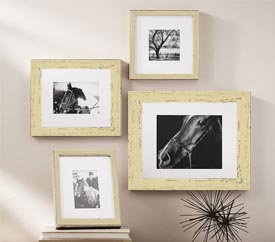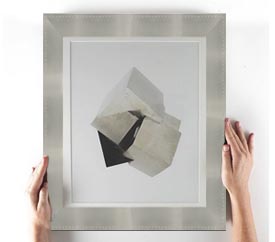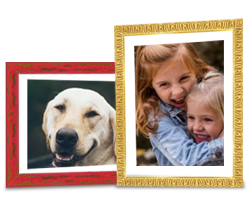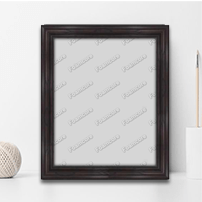Welcome to framesbymail.com, where creativity meets craftsmanship in the world of custom picture frames. Whether you're looking to transform a cherished photograph into a timeless work of art or seeking the perfect frame to complement your decor, we've got you covered. Our user-friendly frameshop platform empowers you to design the perfect frame for your unique vision, whether you're uploading a photo for printing or just browsing our extensive collection of customizable wood and metal frames. At FramesByMail, we believe that framing is not just about preserving memories; it's an opportunity to express your individual style and make a statement.
With our easy-to-use customization tools, the possibilities are endless. You can select from an array of sizes, colors, and styles to create a custom picture frame that's as unique as the moments it encapsulates. Whether you're framing a special family portrait, a stunning piece of art, or a simple snapshot, our custom frames will elevate your space and tell your story. At framesbymail.com, we take pride in the quality of our craftsmanship, ensuring that your frame not only looks beautiful but also stands the test of time. Join us on a journey of creativity, personalization, and unparalleled craftsmanship as we help you frame your world, one picture at a time.
Discover the art of framing like never before. Start designing your custom picture frame today, and let your memories shine in a frame that's as extraordinary as they are.
Custom Picture Frames
Our online shop is the perfect place for all your framing needs! Check out our diverse selection of quality wooden and colorful metal picture frames and get started designing with our easy-to-use frameshop. We offer custom picture frames in almost any size and style.
Online Photo Printing
Want to get started with online photo prints? We have just the solution to get professional quality printing from our shop to your house fast! Our online photo printing is offered in almost any size on any of our premium photo papers and various depth artistic canvases.
FEATURED FRAMES

2" Gold Traditional Poly valucore Picture Frame
Sku: 1415-35

1 1/8" Silver Rust Distress Cap wood Picture Frame
Sku: 1300-585

Economy Round Top Shiny Gold metal Picture Frame
Sku: a-5032

Economy Standard Frosted Silver metal Picture Frame
Sku: a-1131

1" X 2 1/2" Deep Black Shadowbox wood Picture Frame
Sku: 750-15

2 5/8" Light Walnut Faux Burl Scoop wood Picture Frame
Sku: 1300-55

2 1/4" Walnut With Gold Poly valucore Picture Frame
Sku: 1400-25

Economy Wide Flat Top With RevealFrosted Silver metal Picture Frame
Sku: a-2031

3 1/2" Walnut/Gold Bead Poly valucore Picture Frame
Sku: 1400-55
SHOP DEPARTMENTS
FramesByMail.com conveniently brings the luxury of custom picture framing right to your home. We offer the full line of Nielsen and Designer Metal picture frames, as well as a wide range of wood frames. Customers can create their own multi-opening mat, motivational poster, or frame their name with unique photos that create letters. Print and frame, business, hospitality, interior design, fulfillment, volume discounts and API services are also offered. If you're looking for a special, customized piece of framing or wall art, you've come to the right place!
We offer ready-made frames in more common sizes (5x7, 8x10, 16x20, 24x36), as well as the ability to build your own frame. Take a look at our affordable frames above, select one, and use our frame shop to build your perfect frame! All of our frames come with your choice of custom mat, and you can choose to use double or triple matting. We are simply the best place to order custom frames!








